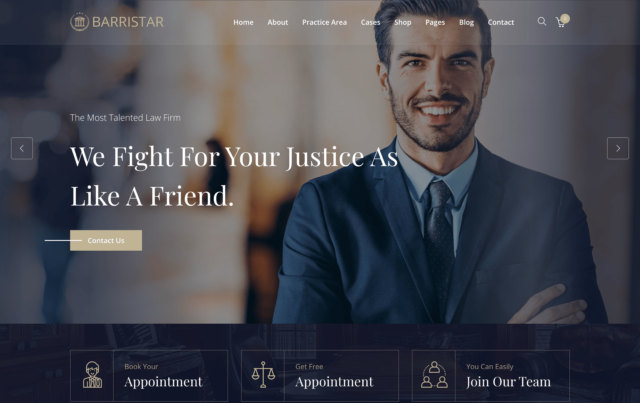Law firms operate in an increasingly competitive digital landscape, where attracting the right clients requires more than just traditional advertising. Behavioral targeting allows law firms to improve their marketing results by delivering personalized content and ads based on user actions, interests, and online behavior.
By analyzing how potential clients interact with a firm’s website, social media, and digital ads, law firms can refine their approach and maximize lead generation. This article explores how behavioral targeting works and provides practical strategies for law firms to implement it effectively.
What Is Behavioral Targeting?
Behavioral targeting is a digital marketing strategy that uses data on user behavior to deliver highly relevant ads and content. Instead of showing the same generic message to every visitor, law firms can tailor their marketing efforts based on:
- Website visits and page views
- Search queries and keyword usage
- Social media interactions
- Past engagement with ads and email campaigns
- Location and device usage
For example, if a user frequently searches for “DUI lawyer in Indiana” and visits a law firm’s DUI defense page, behavioral targeting allows that firm to retarget the user with specific ads about DUI defense services rather than generic legal ads.
How Law Firms Can Use Behavioral Targeting to Improve Marketing Results
1. Retarget Website Visitors with Relevant Ads
Most website visitors do not contact a law firm on their first visit. Retargeting allows firms to display ads to users who previously visited their site, keeping their services top of mind.
Example:
A personal injury law firm can retarget visitors who viewed their “Car Accident Claims” page with an ad saying, “Injured in an Accident? Get a Free Consultation Today.” This reminds the user of their initial search and increases the chances of conversion.
2. Segment Audiences for Personalized Email Marketing
Behavioral targeting helps law firms send personalized emails based on user activity. Instead of a generic newsletter, law firms can segment their audience and deliver targeted content.
Example:
- Users who downloaded an estate planning guide receive a follow-up email about common will and trust mistakes.
- Potential clients who started filling out a contact form but didn’t complete it receive an email prompting them to schedule a consultation.
3. Optimize Pay-Per-Click (PPC) Ads for Higher Conversions
Google Ads and Facebook Ads allow law firms to use behavioral data to refine their ad campaigns. By targeting users who have searched for legal services or engaged with legal content, firms can increase ad relevance and lower cost-per-click (CPC).
Example:
A family law firm can create a PPC campaign that targets users who have recently searched for “child custody lawyer near me.” Instead of running ads for general family law services, they can show ads specifically focused on child custody cases, making the message more relevant to the user’s needs.
4. Improve Social Media Engagement with Behavioral Insights
Social media platforms collect valuable data on user interests and interactions. Law firms can use this information to create more effective content and ads.
Example:
A criminal defense attorney notices that users engaging with their social media posts are particularly interested in DUI defense. The firm can then create targeted ads offering a free DUI case review, ensuring that the message reaches users who are most likely to need that service.
5. Use Behavioral Targeting to Improve Website User Experience
A law firm’s website can dynamically change content based on a visitor’s behavior. AI-powered tools and behavioral analytics help tailor the experience to each user.
Example:
- A returning visitor who previously viewed personal injury content sees a homepage banner for “Maximizing Your Personal Injury Settlement.”
- A first-time visitor browsing estate planning services is prompted with a chatbot offering a free consultation.
By personalizing website content, firms can guide potential clients toward taking action.
6. Utilize Geotargeting to Reach Local Clients
Behavioral targeting can be combined with geotargeting to display ads based on a user’s physical location.
Example:
A law firm with offices in New York and New Jersey can run separate ad campaigns targeting users searching for “divorce attorney in Manhattan” and “divorce attorney in Newark,” ensuring that each audience sees ads specific to their location.
Best Practices for Implementing Behavioral Targeting
- Collect Data Ethically: Ensure compliance with privacy laws such as GDPR and CCPA. Provide clear opt-ins for data collection.
- Test and Optimize Campaigns: Regularly analyze campaign performance and adjust based on engagement and conversion rates.
- Use AI and Automation Tools: Platforms like Google Ads, Facebook Ads, and AI-driven marketing tools help automate behavioral targeting efforts.
- Focus on Value-Driven Content: Deliver relevant, helpful content rather than aggressive sales pitches to build trust with potential clients.
Our Final Thoughts
Behavioral targeting enables law firms to engage potential clients with highly relevant messaging. By leveraging website retargeting, personalized email campaigns, PPC optimization, and social media insights, law firms can increase conversions and improve marketing ROI.
As digital marketing continues to evolve, firms that implement behavioral targeting strategies will gain a competitive advantage, ensuring they reach the right audience at the right time with the right message.








